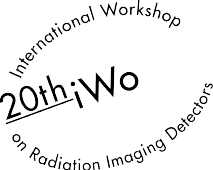Speaker
Description
The Langton Ultimate Cosmic ray Intensity Detector (LUCID) is a payload on the satellite TechDemoSat-1 (TDS-1), used to study the radiation environment in low Earth orbit. TDS-1, placed in a 635 km, 98.4° Sun-synchronous orbit, is a technology demonstration satellite developed by Surrey Satellite Technology Ltd as a platform for testing novel technologies from UK academia and industry. The detector operated successfully from late 2014 to mid 2017, capturing over 1.3 million frames of radiation data from its five Timepix detectors on board. LUCID (Fig.1) is the second use of the Timepix detector technology in open space, the first with a 3D configuration of detectors and the first on a commercial platform - providing a valuable testbed for the performance of this technology in a new environment.
Before launch, LUCID was extensively simulated and modelled using GEANT4 [1]. Since launch, the data from LUCID has been analysed with computing resources provided by GridPP, using a deep learning machine learning algorithm to classify particle tracks. This algorithm provides a new approach to processing Medipix data, using a training set of volunteer labelled tracks, combining machine and human classifications. We present some early science applications from these particle track classifications, in particular constructing radiation maps for different particle types, tracking the South Atlantic Anomaly, comparing the day and nightside magnetosphere, and identifying heavy ions. We also compare to measurements from the Timepix detectors on the International Space Station [2], and the Timepix-based SATRAM detector on Proba-V [3].
For managing, accessing, and visualising the LUCID data, we have developed an online, open access, platform called Timepix Analysis Platform at School (TAPAS). This provides a swift and simple way for users to analyse data that they collect using Timepix detectors from both LUCID and other other Timepix experiments. We also also discuss LUCID's link to a system of ground-based Timepix detectors in UK secondary schools, that enables students from more than 80 schools across the country to use Timepix detectors for their own research projects and experiments. Students have taken radiation measurements from soil samples across the country, up mountains, from Unmanned Surface Vessels (`AutoNauts’) at sea, as well as contributing to analysing Medipix data from the MoEDAL experiment at the LHC and the IceCube Neutrino Observatory.
References:
[1] T Whyntie and M A Harrison, Full simulation of the LUCID experiment in the Low Earth Orbit radiation environment, Journal of Instrumentation, Volume 10, March 2015
[2] N Stoffle et al., Timepix-based radiation environment monitor measurements aboard the International Space Station, Nucl. Instr. Meth. Phys. Res., Volume 782, May 2015
[3] C Granja et al., The SATRAM Timepix spacecraft payload in open space on board the Proba-V satellite for wide range radiation monitoring in LEO orbit, Planetary and Space Science, Volume 125, June 2016
Fig.1
LUCID mid assembly. The four orthogonally positioned detectors are visible on the right hand side of the instrument.




